Clever software
VELOSO’s Execution Excellence and Successful Humans @ Work® philosophy connects the dots from various business domains, hence combines and further develops concepts and ideas from many different thought leaders.
Because we incorporated it all into the ActionPlanner software, you can now enjoy the benefits of Execution Excellence best practices while using our intuitive cloud-based subscription service.
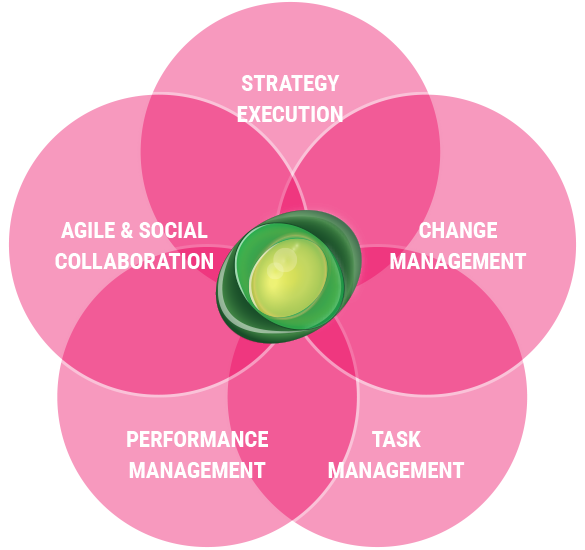
Below you will find the management domains, thought leaders and concepts that supports the value created from our existing feature-set, as well as inspires us to deliver an awesome product roadmap in the future.

Strategy Execution Management
As a business professional who has tried to execute strategy, it probably comes as no surprise to you, that an estimated 80% of all strategic objectives are not successfully implemented, hence there is a huge execution gap.
There has been many approaches the past 2 decades to bridge the execution gap, from perceiving strategy execution as a process, a model, a system to a network of promises that needs managing.
Thought Leaders we are inspired by include Larry Bossidy, Ram Charan, Robert S. Kaplan, David P. Norton, Michael Porter and Stephen Bungay.
Examples of theory built into ActionPlanner
Source
Inspiration
ActionPlanner features & concepts
Strategy Deployment / Policy Deployment / Hoshin Kanri
The X-matrix
Roadmaps aligning objectives, KPIs, initiatives, milestones and actions
Balanced Scorecard (Kaplan & Norton)
Governance model
Execution Excellence Governance including a process, roles, color codes and customizable terminology, roadmap structure, security setting, user permissions etc.
The Art of Action (Stephen Bungay)
Getting the right things done
Intent & autonomy expert formulations
Priority lists for all users
Why, what and how formulations
Economics
Economies of scale
Economies of scope
Ease of use combined with flexible user types enables team execution within and across your company and with partners across companies
3 generic tools (initiatives, milestones and actions) to organise any type of work e.g.: programs, projects, big and small development activities, reminders, to-dos, but also repetitive activities like processes, 1:1 meetings, employees on-boarding in order to visualise dates, capture minutes and efficient knowledge sharing
Examples of theory built into ActionPlanner
Source
- Strategy / Policy Deployment / Hoshin Kanri
- Balanced Scorecard (Kaplan & Norton)
- The Art of Action (Stephen Bungay)
- Economics
Inspiration
- The X-matrix
- Governance model
- Getting the right things done.
- Intent & autonomy expert formulations
- Economies of scale
- Economies of scope
ActionPlanner features & concepts
- Roadmaps aligning objectives, KPIs, initiatives, milestones and actions
- Execution Excellence Governance including a process, roles, color codes and customizable terminology, roadmap structure, security setting, user permissions etc.
- Priority lists for all users
- Why, what and how formulations
- Ease of use combined with flexible user types enables team execution within and across your company and with partners across companies
- 3 generic tools to organise any work e.g.: programs, projects and tasks (big to small development activities) but also repetitive activities like processes, 1:1 meetings to visualize dates, capture minutes and efficient knowledge sharing
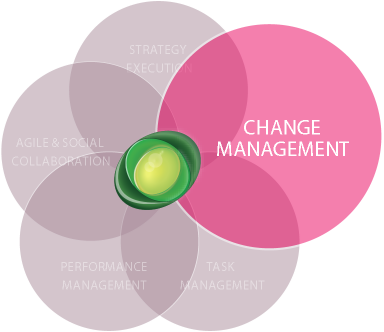
Change Management
Change management is a leadership discipline that focuses on preparing, initiating and supporting a change process from a present state to a desired state on an individual, team and/or company level.
Because of the systematic nature of change, much holistic thinking and various models have been developed to structure data and make sense of the desired change.
Thought Leaders we are inspired by include John Kotter, W. Edwards Deming, Michael L Smith and James Erwin and Bruce D. Henderson.
Examples of theory built into ActionPlanner
Source
Inspiration
ActionPlanner features & concepts
Leading change (John Kotter)
The burning platform
Removing obstacles
Planning for and creating short-term wins
Why descriptions on initiatives to justify the desired change, understand the greater purpose with the initiative and enable sense making – which is an enabler for motivation. A why articulation also can help identify the specific problems that needs solving, hence create a sense of urgency.
Red and amber color codes on initiatives and milestones to flag obstacles. Responsible people are requested to articulate the reasoning for the chosen flag color and proactively suggest corrective actions prior to review meetings
Ability to plan milestone and actions as you go when circumstances are uncertain. Notifications and knowledge sharing across teams when people are successful
Responsibility assignment matrix – RACI (Michael L Smith and James Erwin)
Clarifying roles and responsibilities in cross-functional/ departmental initiatives and processes
Roles including: responsible, owner, creator, supporters and shares as well as an execution governance model that manages user permissions and who is informed about what and by when for each of the roles
Modern quality control (William Edwards Deming)
The PDCA (Plan, Do, Check, Act ) Cycle
Action plan, align, execute, feedback, follow-up and learning loops. Adjust plan, re-align, execute, feedback, follow-up. Repeat
The Experience Curve (Bruce D. Henderson)
Every time you double the repetition, you reduce the cost with 10 – 25%
A common way for teams to talk about execution, plan activities, make agreements and give feedback/report. This is repeated weekly, if not daily, hence drives value and efficiency up and costs down within a few months
Examples of theory built into ActionPlanner
Source
- Leading change (John Kotter)
- Responsibility assignment matrix – RACI (Michael L Smith and James Erwin)
- Modern quality control (William Edwards Deming)
- The Experience Curve (Bruce D. Henderson)
Inspiration
- The burning platform
- Removing obstacles
- Planning for and creating short-term wins
- Clarifying roles and responsibilities in cross-functional/departmental initiatives and processes
- The PDCA (Plan, Do, Check, Act ) Cycle
- Every time you double the repetition, you reduce the cost with 10 – 25%
ActionPlanner features & concepts
- Why descriptions on initiatives to justify the desired change and greater purpose, create a sense of urgency and clearly identify the problems that needs solving
- Red and amber color codes on initiatives and milestones to flag obstacles. Responsible people are requested to articulate the reasoning for the chosen flag color and proactively suggest corrective actions prior to review meetings
- Ability to plan milestone and actions as you go when circumstances are uncertain. Notifications and knowledge sharing across teams when people are successful
- Roles including: responsible, owner, creator, supporters and shares as well an execution governance model that manages user permissions and who is informed about what and by when for each of the roles
- Action plan, align, execute, feedback, follow-up and learning loops. Adjust plan, re-align, execute, feedback, follow-up. Repeat
- A common way for teams to talk about execution, plan activities, make agreements and give feedback/report. This is repeated weekly, if not daily, hence drives value and efficiency up and costs down within a few months
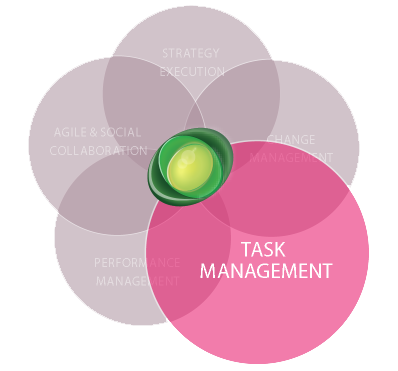
Task Management
Task management is the process of managing a task through its life cycle, involving planning, testing, tracking, reporting and executing the task.
Task management can help individuals achieve goals or teams collaborate and share knowledge for the accomplishment of team goals. Tasks are also differentiated by complexity – from low to high and duration – from short to long.
Effective task management means managing all aspects of a task, including its status, priority, deadline, human resources assignment, recurrence, dependency and notifications.
Thought Leaders we are inspired by include Davis Allan and Hermann Ebbinghaus.
Examples of theory built into ActionPlanner
Source
Inspiration
ActionPlanner features & concepts
Getting things done – GTD (David Allan)
Write things down into a trusted system to avoid spending mental capacity remembering hundreds of small things
Translate tasks into initiatives, milestones and actions depending on complexity.
Gather everything into one trusted system with ActionPlanner – from big initiatives to small reminders, from developing to running the business activities, from public to private and from unique to repetitive actions
Forgetting curve (Hermann Ebbinghaus)
Reviewing information frequently increases the strength of memory
Actions, compressed email and notifications engage users daily. Regular follow-up sessions in the on-boarding process to review, reflect and repeat driving adaption
The experience curve
Efficiency gained from repetitions
Bottom-up creation of activities. Super users to support local teams
Examples of theory built into ActionPlanner
Source
- Getting things done – GTD (David Allan)
- Forgetting curve (Hermann Ebbinghaus)
- The experience curve
Inspiration
- Write things down into a trusted system to avoid spending mental capacity remembering hundreds of small things
- Reviewing information frequently increases the strength of memory
- Efficiency gained from repetitions
ActionPlanner features & concepts
- Translate tasks into initiatives, milestones and actions depending on complexity.
- Gather everything into one trusted system with ActionPlanner – from big initiatives to small reminders, from developing to running the business activities, from public to private and from unique to repetitive actions
- Actions, compressed email and notifications engage users daily. Regular follow-up sessions in the on-boarding to review, reflect and repeat drives adaption
- Bottom-up creation of activities. Super users to support local teams
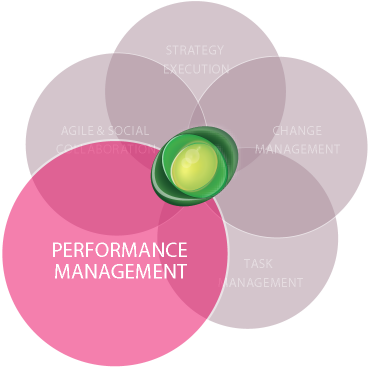
Performance Management
Performance management includes activities which ensure that company goals are consistently being met in an effective and efficient manner.
Performance management can focus on the performance of an individual, a team or an entire company.
Thought Leaders we are inspired by include Donald Sull, Charles Spinosa and Locke & Latham.
Examples of theory built into ActionPlanner
Source
Inspiration
ActionPlanner features & concepts
Promise-based management
(Donald Sull & Charles Spinosa)
Make promises public
Keep promises active and relevant
Promises must be voluntary (when you have had a chance to say no, you are more committed when you say yes)
Make explicit promises: be specific and avoid misunderstanding (by assuming you understand)
Conversations for Commitment
Publicly available overviews of progress in real-time
ActionPlanner empower the initiative responsible to reflect reality by allowing date changes and agile milestone creation/editing. Quick edit to keep promises active to the level of real-time
Approval workflow (digital handshake) with ability to modify or even decline assignments with a comment
Writing down agreements in a structured way and then visualising the promises in real-time reduce the risk of misunderstandings. Why, what and how descriptions, milestones, feedback requirements and KPIs are available for promises to stay explicit
Approval workflow and role-based approach to successfully formulate, negotiate, execute, evaluate and learn from promises
Goal commitment (Locke & Latham)
Because commitment is an internal psychological state, self-report is also the most appropriate measure for assessing goal commitment
Expectation of evaluation drives accountability
Triangular feedback (colors, comments and metrics) as a self-reporting approach to visualise commitment
.
User activity level metrics, feedback requirements, clear responsibilities and due dates on all levels and activities
SMART goals
Make goals measurable and time-boxed
Quantitative and qualitative KPIs. Promises to have mandatory start and end dates
OKR
Quarterly reflection cycles
OKR scoring from 0-1
Goal cascading
Feedback requirements that send out reminders for when to reflect and give feedback
Performance index (actual vs. plan)
Cascade and translate goals, initiatives and milestones to all levels
Details
Source
- Promise-based management (Donald Sull & Charles Spinosa)
- Goal commitment (Locke & Latham)
- SMART goals
- OKR
Inspiration
- Make promises public
- Keep promises active and relevant
- Promises must be voluntary (when you have had a chance to say no, you are more committed when you say yes)
- Make explicit promises: be specific and avoid misunderstanding (by assuming you understand)
- Conversations for Commitment
- Because commitment is an internal psychological state, self-report is also the most appropriate measure for assessing goal commitment
- Expectation of evaluation drives accountability
- Make goals measurable and time-boxed
- Quarterly reflection cycles
- OKR scoring from 0-1
- Goal cascading
ActionPlanner features & concepts
- Publicly available overviews of progress in real-time
- ActionPlanner empower the initiative responsible to reflect reality by allowing date changes and agile milestone creation/editing. Quick edit to keep promises active to the level of real-time
- Approval workflow (digital handshake) with ability to modify or even decline assignments with a comment
- Writing down agreements in a structured way and then visualising the promises in real-time reduce the risk of misunderstandings. Why, what and how descriptions, milestones, feedback requirements and KPIs are available for promises to stay explicit
- Approval workflow and role-based approach to successfully formulate, negotiate, execute, evaluate and learn from promises
- Triangular feedback (colors, comments and metrics) as a self-reporting approach to visualise commitment
- User activity level metrics, feedback requirements, clear responsibilities and due dates on all levels and activities
- Quantitative and qualitative KPIs. Promises to have mandatory start and end dates
- Feedback requirements that send out reminders for when to reflect and give feedback
- Performance index (actual vs. plan)
- Cascade and translate goals, initiatives and milestones to all levels
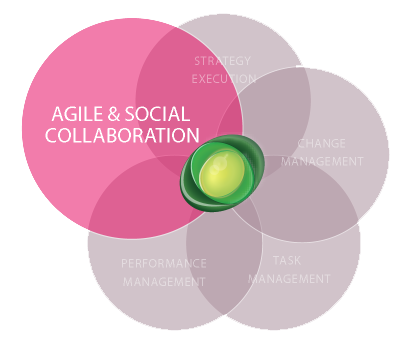
Agile and Social Collaboration
Social collaboration refers to processes that help individuals or teams interact and share information to achieve common goals. Such processes increasingly take place on the internet, where collaboration and sharing of information becomes easier and in real-time, enabled by the use of digital tools.
Happiness at work has traditionally been seen as a potential by-product of positive outcomes at work and social collaboration, rather than a pathway to business success. Nowadays, the happiness factor is viewed as one of the major sources of positive outcomes in social collaboration. In fact, companies with higher than average employee happiness, exhibit better financial performance and customer satisfaction.
Thought Leaders we are inspired by include Shawn Achor, Joanne H. Garvin, Richard O. Mason and Sonja Lyubomirsky.
Examples of theory built into ActionPlanner
Source
Inspiration
ActionPlanner features & concepts
Positive Psychology (Shawn Achor)
Reverse the formula for success by training your brain to focus on the positives e.g. by being grateful or do random acts of kindness
Likes and comments to colleague’s feedback to acknowledge, encourage and knowledge share
Agile development
Agile manifesto:
- Individuals and interactions over processes and tools
- Responding to change over following a plan
The roadmap structure is made out of bilateral agreements (initiatives) where each responsible user drives the cascading into the next organisational level if they have the need
The Virtuous Organization (Joanne H. Garvin, Richard O. Mason)
Freedom and autonomy at a workplace have the most effect on the employee’s level of happiness
Each responsible person is empowered to make necessary changes to the agreed plan as reality unfolds and assumptions change. The latest feedback crowdsourced across all initiatives in automatically consolidated overview reports
Happiness at work (Sonja Lyubomirsky)
Happy people are more productive at work and more creative. They are better leaders and negotiators, are more helpful, have better health and show more resilience to stress
Individuals can choose to share a birthday in a common birthday calendar.
Look out for an awesome product roadmap to have people smile more and increase the level of happiness at work.
Beyond Budgeting (Jeremy Hope & Robin Fraser)
More agile. More human
Use sub-initiatives to engage people at any level. Allow for subjective as well as metric based reporting and release autonomous execution dynamics in your team
Examples of theory built into ActionPlanner
Source
- Positive Psychology (Shawn Achor)
- Agile development
- The Virtuous Organization (Joanne H. Garvin, Richard O. Mason)
- Happiness at work (Sonja Lyubomirsky)
- Beyond Budgeting (Jeremy Hope & Robin Fraser)
Inspiration
- Reverse the formula for success by training your brain to focus on the positives e.g. by being grateful or do random acts of kindness
- Agile manifesto: Individuals and interactions over processes and tools & responding to change over following a plan
- Freedom and autonomy at a workplace have the most effect on the employee’s level of happiness
- Happy people are more productive at work and more creative. They are better leaders and negotiators, are more helpful, have better health and show more resilience to stress
- More agile. More human
ActionPlanner features & concepts
- Likes and comments to colleague’s feedback to acknowledge, encourage and knowledge share
- The roadmap structure is made out of bilateral agreements (initiatives) where each responsible user drives the cascading into the next organisational level if they have the need
- Each responsible person is empowered to make necessary changes to the agreed plan as reality unfolds and assumptions change. The latest feedback crowdsourced across all initiatives in automatically consolidated overview reports
- Individuals can choose to share a birthday in a common birthday calendar. Look out for an awesome product roadmap to have people smile more and increase the level of happiness at work.
- Use sub-initiatives to engage people at any level. Allow for subjective as well as metric based reporting and release autonomous execution dynamics in your team
Join the Execution Excellence revolution
We want to unfold and develop the Execution Excellence community with you, so join us in the team execution revolution and help change the world towards more successful and happier people at work to enable happier people at home.
